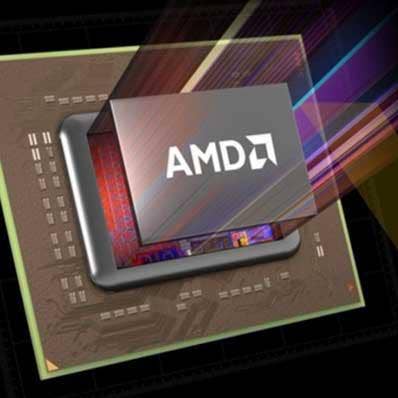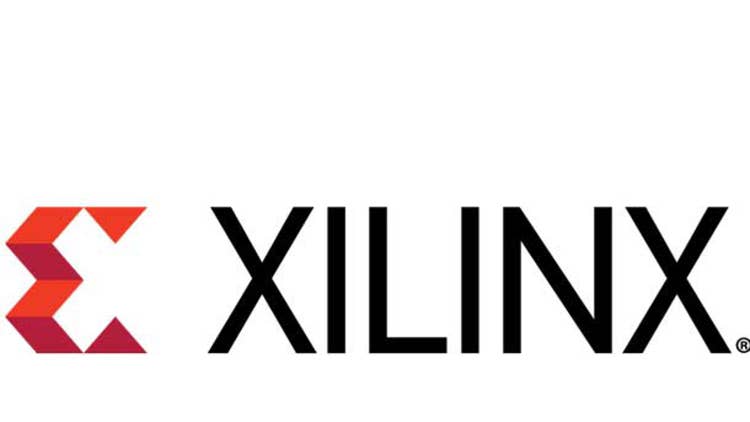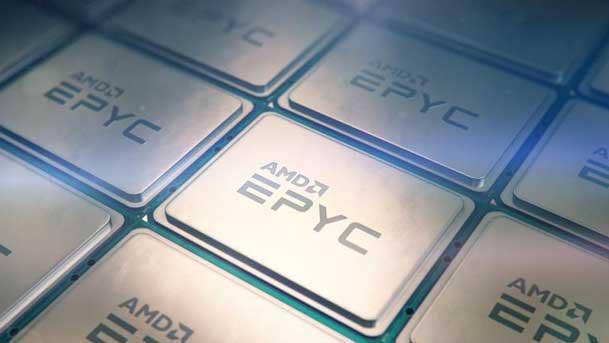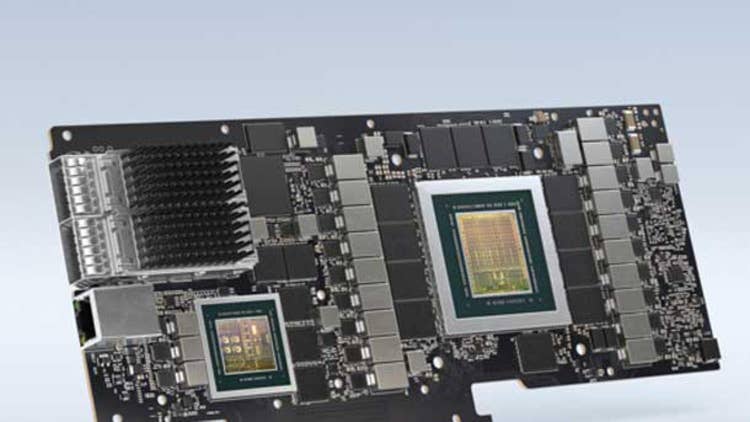The Rumored $30B AMD-Xilinx Acquisition: 5 Big Things To Know
AMD’s rumored interest in the programmable chipmaker comes as Xilinx has made large investments in new accelerator and SmartNIC products for data centers and 5G deployments. Xilinx is also expanding its channel organization to work with Intel and Nvidia partners.

Another Large Chip Deal Is Coming — Possibly
As if the semiconductor industry wasn’t already undergoing seismic changes, a new report states that AMD is looking to seal a deal to acquire programmable chipmaker Xilinx for more than $30 billion.
As news of the acquisition talks emerged Thursday night, another mega chip deal has been underway: Nvidia’s acquisition of British chip designer Arm — a move that would give Nvidia ownership of GPU, network and CPU technologies for the data center and beyond.
[Related: Nvidia’s 8 Biggest GTC 2020 Product Announcements You Might Have Missed]
Xilinx declined to comment. AMD did not respond to a request for comment.
AMD’s stock price was down by more than 3 percent late Friday morning while Xilinx’s stock was up by more than 12 percent.
What follows are five big things to know about the rumored deal as well as the positions of AMD and Xilinx in the data center market, IT channel and beyond.
What We Know About The Deal
The Wall Street Journal first reported on the acquisition talks between AMD and Xilinx on Thursday night, saying that the deal could be valued at more than $30 billion.
Bloomberg then followed with its own report, which confirmed the same basic details, including the assertion that a deal could come together as soon as next week and an acknowledgement that proceedings could unravel as they “remain in flux.” The Wall Street Journal reported that deal talks had already stalled once before restarting recently.
Veteran semiconductor reporter Charlie Demerjian said on Twitter that the deal has “been in the works for a long time” and that he had first heard about it roughly two years ago.

What Is Xilinx, And What Does It Sell?
Xilinx, a San Jose, Calif.-based company founded in 1984, makes reprogrammable chips called field-programmable gate arrays, or FPGAs, that serve as the basis for a variety of products targeting several markets, including telecom, automotive and broadcast. But over the last two years, the company has embraced a strategy that is bringing it deeper into the IT channel than ever before: “data center first.”
The company is pursuing the data center market with a lineup of Alveo accelerator cards, which launched in 2018 to provide “adaptable” high performance for applications ranging from storage and data analytics to machine learning and streaming video.
Besides the data center, another strategic area for Xilinx is telecom and 5G. In September, the company announced a new product called the T1 Telco Accelerator Card for O-RAN distributed units and virtual baseband units in 5G networks.
If Santa Clara, Calif.-based AMD acquired Xilinx, it would have a new arsenal of products to compete with Intel’s Programmable Solutions Group, home to the chipmaker’s own FPGA products and accelerator cards that were gained through Intel’s 2015 acquisition of Altera. Xilinx has also positioned its Alveo cards as competitive with Nvidia’s data center GPUs.

Xilinx’s Relationship With AMD To Date
Xilinx has been a strategic technology partner for AMD’s data center efforts, namely the chipmaker’s EPYC server processors, in recent years.
For the launch of AMD’s first- and second-generation EPYC processors, the chipmaker named Xilinx as a key server hardware ecosystem partner whose products are featured in EPYC-based servers.
“The launch of the AMD EPYC processor signifies an important milestone in the industry,” said Victor Peng, who was Xilinx’s COO and is now CEO, in a statement for the 2017 first-generation EPYC launch. “Together with Xilinx’s All Programmable devices, the EPYC platform provides outstanding performance when accelerating data center applications. We are also delighted to be working with AMD in furthering open data center standards, such as the CCIX interconnect, to provide the necessary heterogeneous computing solutions for next generation workloads.”
When AMD released second-generation EPYC processors, the company was first to market with CPUs that support PCIe 4.0 connectivity, which allows Xilinx’s PCIe 4.0-compatible Alveo accelerator cards to take advantage of the technology’s higher throughput.
In a white paper published by AMD in March 2019, the company detailed a Xilinx Deep Learning solution that had been optimized on and EPYC-based server. The chipmaker pitched Xilinx’s FPGA products as capable of delivering tenfold acceleration of a “broad set of applications,” with the ability to reconfigure the FPGAs, making them “an ideal fit for the changing workloads for the modern data center.”

Xilinx Is Diving Deep Into The IT Channel
Xilinx has recently started to work more closely with IT solution provider companies that have traditionally worked with Intel and AMD on server deployments.
Earlier this year, Sam Bellamy, partner business director at Xilinx, told CRN that the company has been “building out the base foundation layers of our distribution and channel strategy at Xilinx [and] the data center group for the last two years.”
With the company’s Alveo accelerator cards, Xilinx has started to operate at a “much higher level of integration” — L6 barebone servers and beyond — than it previously has, according to Bellamy. Prior to its Alveo cards, Xilinx had been more focused on levels L1 through L6 of integration, providing the base FPGA technology that board manufacturers would then integrate into their products.
“Xilinx has a long and proud history of working in its simplest form, indirectly,” he said. “We rely upon distribution and these partnerships for our silicon product. And so it‘s obviously been keen for us to replicate that in our new Alveo board world, to create and build the same channel partnerships.”
As of June, Bellamy said Xilinx had around 17 value-added reseller partners around the world, which included high-performance computing integrator Microway and Colfax International as well as IT services provider Groupware and HPC distributor Exxact. The company also has a new distribution partnership with IT shop Ingram Micro.
Xilinx’s partner resources include in-depth training, the availability of demonstration units, lead generation, reference architectures as well as branding, marketing and support tools.
“We felt that we can give that technology channel a real leg up with some of our expertise,” Bellamy said. “[We’ll] still have them implicitly building and servicing those end customer needs, but really shorten the time to market and the time to revenue for all of us involved, if we can establish a strong, strong set of reference products and appliances.”

Like Nvidia, Xilinx Is Also In The SmartNIC Market
Nvidia this week announced a new kind of processor, the data processing unit, that makes use of SmartNIC technology from the company’s acquisition of Mellanox Technologies.
SmartNICs are basically network interface cards with intelligence baked into them, allowing them to offload network traffic processing from the CPU, and Xilinx is also in this market, thanks to the company’s 2019 acquisition of NIC marker Solarflare Communications.
If AMD were to acquire Xilinx, it would give the chipmaker another way to compete with Nvidia, whose data center GPUs are currently outselling AMD’s.
Xilinx’s current SmartNIC offering is part of the company’s Alveo card lineup, the Alveo U25, which the company says provides “ultra-high throughput, small packet performance and low-latency,” with the ability to improve cloud-based applications by up to 400 percent.
Sam Bellamy, partner business director at Xilinx, said Xilinx has been in the process of merging Solarflare’s partner network with Xilinx’s new data center partner network.
“Solarflare bought with it a fairly strong set of value-added resellers and distributors around the world. So straight away, overnight, we went from you know very few resellers and distributors in our network to the hundreds,” he said.

AMD’s Xilinx Interest Represents Its Big Data Center Ambitions
AMD has been making bigger strides in the data center, most recently with its second-generation EPYC processors that have allowed the company to claim double-digit share in the x86 server market against Intel. The company is also planning new data center GPUs based on a new CDNA architecture.
“We feel that customers are very open across cloud, OEM, enterprise. It‘s on us to execute, and we think about that every day,” AMD CEO Lisa Su said in the company’s most recent earnings call. ”But in terms of where the roadmap is, what are we trying to accomplish, where the customers are, there’s a pull from customers to engage us across a number of workloads.”
Most recently, AMD introduced its new Zen 3 CPU architecture, which will power the company’s next-generation EPYC Milan processors with a 19 percent uplift in instructions per clock over Zen 2 chips, higher boost frequencies as well as a redesigned core layout and cache topology that gives cores two times faster access to a larger cache.
“Zen 3 increases our lead in overall performance,” Su said in the company’s Zen 3 reveal Thursday. “It increases our lead in power efficiency, and also now, it delivers the best single threaded performance and gaming performance as well.”
In an August 2019 interview with CRN, AMD data center executive Forrest Norrod pushed back on the idea of AMD copying Intel’s data-centric strategy to offer a wider array of products.
“We are not a world-class fabric company. We are not a world-class memory company. We are not a world-class Ethernet company,” he said in the interview during EPYC Rome’s launch. “I‘m not pretending to be, but what I am going to do is I’m going to open my ecosystem, and I’m going to work with Mellanox, I’m going to work with Broadcom, I’m going to work with Micron, I’m going to work with Samsung. And we’re going to make sure that world-class technology from those companies is extremely well supported on the open EPYC ecosystem. And I think generally that wins.”